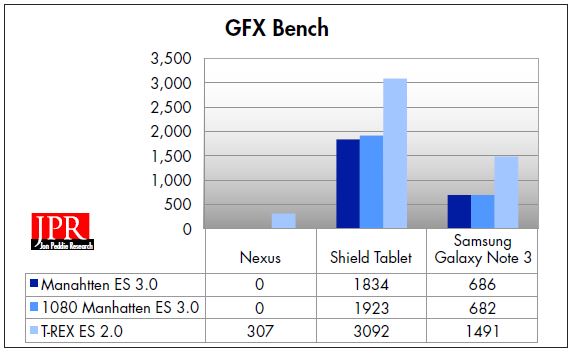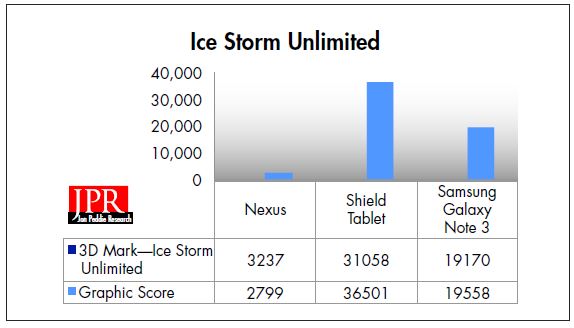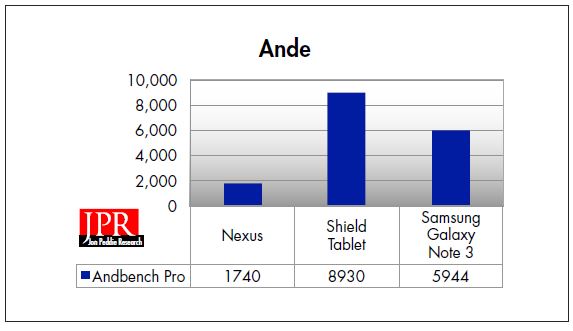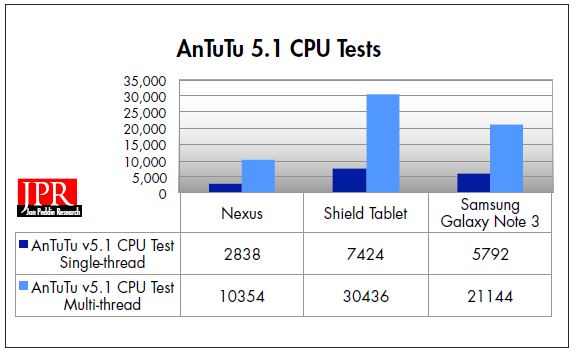Thin, light, and remarkably powerful—what’s not to like?
By Robert Dow
The K1 processor in the Shield tablet far outperforms any mobile processor that we have tested. The K1 is a 192-core Kepler GPU matched with a 2.2-GHz ARM Cortex A15 CPU with 2 GB RAM which drives an 8-inch 1920 x 1200 touch display, giving it a PPI of 283, the highest PPI of all the 8-inch tablets we’ve tested.
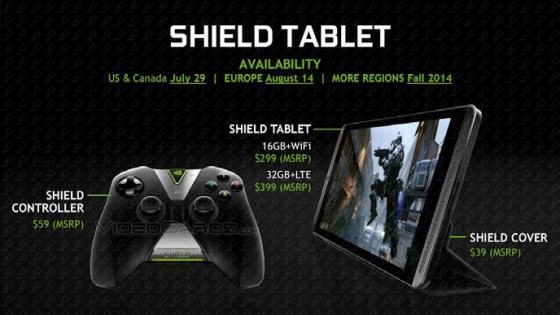
The Shield tablet is designed to give the user multiple options for game play— for home and on the road. The Shield allows you to stream games from your PC and play them on the Tablet. You can attach the Shield to the television and play your games on a big screen.
To take full advantage of the Shield tablet, the user needs to invest in the shield wireless controller, which is very similar to Nvidia’s earlier launched Shield handheld. The major difference is that the layouts of the start and video playback buttons have been modified. The layout consists of two analog sticks with D-pad four-button layout with two triggers and two bumpers—pretty standard. The Shield controls keep the analog sticks in parallel, like in the PS3, rather than off-set, like an Xbox controller—it just takes a little time to get used to. The controller is lightweight, yet the buttons, sticks, and bumpers have a high-quality feel. The original Shield standalone weighs 1.46 pounds, while the wireless controller for the tablet is 11 ounces, with the Shield tablet tipping the scales at 13.2 ounces.
The Shield wireless controller allows you to play console and PC-type games, which is the idea—without it the consumer will be constrained to tablet/phone-style gaming.
The Shield tablet is also equipped with DirectStylus 2. It allows for note-taking and includes handwriting recognition software, and there are creative apps too, such as the Dabbler, which allows you to try your hand at watercolors and oil painting.
The Shield tablet is blazing fast with a gorgeous screen—at $299 it is roughly the same price as an iPad Mini with 16 GB of memory and $150 more than a Kindle Fire HD with 8 GB of memory. It is competitively priced, given the quality of the processor, screen resolution, and storage capacity.
We compared the Shield tablet with the Asus Nexus 7 and the Samsung Galaxy Note 3. The general characteristics of the three devices are shown in the accompanying table.

The Nvidia Shield tablet, of course, did very well in all the tests, as you would expect, but surprisingly was beaten by the Snapdragon in the Galaxy Note 3 in the AnTuTu v5.1 tests. When started, the test suite will test all aspects of a device, including UX, GPU, RAM, CPU, and I/O. Each item is individually assessed and given a score.
Kishonti’s benchmarks are well known and respected, and very difficult to cheat. Our results were right in line with what Kishonti has in their database.
Futuremark is the granddaddy of benchmarks and runs on all platforms. The results we got for the Ice Storm tests were what we expected against the Nexus tablet, but here again we were surprised by the performance of the Galaxy Note 3.
Last but far from least, we ran Ande Bench Pro, and the results were pretty much in line with the other tests (excepting Antutu). However, our results differed with what Ande published on their website, which shows the Nvidia Shield at 9987 (compared to our 8930), and the Galaxy Note 3 varied from 7455 to 8476, whereas we got 5944 with our Snapdragon 800 Galaxy Note 3.
Normalizing to the Asus 7-inch tablet, we got the results shown in the table.
A tablet that holds its own in gaming
The Nvidia Shield tablet holds its own against comparable tablets. In one sense it could be argued that the Shield has been designed for gaming and these other devices are multi-purpose, so it’s not a fair fight. It’s fair enough. The Shield has been designed for game play, with a dedicated controller and the ability to play on the TV screen. We also like that Nvidia added a stylus. Maybe game developers will take advantage of a stylus and maybe they won’t, but it adds to the overall usefulness of the tablet and provides one more reason to take it on the road. That’s the same reason we like the Dabbler app included for the stylus. The great thing about this generation and future generations of tablets and phones and phablets is that they’re capable of just about anything.

